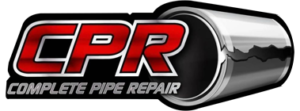Common Causes of Sewer Line Bellies (And How to Fix Them)
When a sewer pipe is installed with the wrong slope or starts to shift underground, a low spot, known as a “sewer belly,” can form. It might not sound like a big deal, but it can lead to clogs, backups, and even pipe failure over time.
At CPR – Complete Pipe Repair, we help homeowners across Troy, Dayton, and the Miami Valley diagnose and fix sewer bellies without digging up the yard. Here’s what causes them, how to spot them, and how we fix them for good.
What Is a Sewer Line Belly?
A sewer belly is a section of pipe that has sunk or shifted, creating a low point where water and waste can collect. This standing water slows down the flow, allows buildup to accumulate, and eventually causes clogs or backups.
We often find them during video pipe inspections.
What Causes Sewer Bellies?
1. Poor installation
Water can’t drain properly if the sewer line wasn’t installed with the proper slope (¼ inch per foot). Even new homes can have this issue.
2. Soil movement or settling
Freeze-thaw cycles, erosion, or heavy rains can shift the soil under your pipes, especially in loose backfill or clay soil areas.
3. Root intrusion
As tree roots grow and press against the pipe, they can cause it to bow, sag, or separate.
4. Aging or weakened materials
Old clay or cast iron pipes can deteriorate and sag over time, especially in homes built before the 1980s.
Signs You Might Have a Sewer Belly
- Recurring clogs or backups in the same drain
- Gurgling sounds from multiple fixtures
- Sewer odors indoors or outside
- Water is pooling in the yard above the line
- Slow drains even after snaking
These symptoms often mimic other issues, so an inspection is key.
How We Fix Sewer Line Bellies
Once we’ve confirmed the belly, we’ll recommend the best solution based on its severity.
- Minor bellies or partial dips can sometimes be sealed and lined using CIPP lining — creating a smooth, reinforced flow path inside the pipe.
- Trenchless sewer repair may install new pipe segments without excavation for larger bellies or complete separations.
In rare cases, if trenchless options aren’t viable, we’ll discuss a minimal excavation plan with complete transparency.
Serving the Miami Valley with Precision
We’ve helped homeowners in Vandalia, Dayton, Troy, and surrounding areas clean and affordably restore their sewer systems.
Suspect a Sewer Belly?
If your drains don’t seem right, don’t ignore them. Call CPR (937) 703-1811 today to schedule a video inspection and see if a belly is causing the problem.
